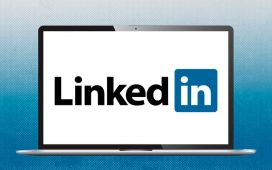.
“The people who are crazy enough to think they can change the world are the ones who do.”
You may recognize that quote from Steve Jobs, the guy who launched a company called Apple that transformed the way billions of people use technology that impacts nearly every facet of their lives.
Your dreams may be more modest. Nevertheless, it’s likely that you sometimes struggle with—and frequently benefit from—change. And in our fast-paced world, change continues to be a constant challenge.
Excellent counsel on managing that challenge can be found in CHANGE: How to Turn Uncertainty Into Opportunity.
Two of the authors, Curtis Bateman and Marché Pleshette, sat down for a conversation on how to navigate change in our turbulent times. Bateman has more than 25 years of experience in the training industry and has done high-impact work with organizations ranging from Bloomberg to Disney. Today he oversees the international division of FranklinCovey, regarded by many as the world’s most trusted leadership company. Pleshette, also with FranklinCovey, is a skilled leadership coach who has worked with companies in a wide range of industries.
The challenges of change are no secret. In fact, a McKinsey study shows that only 26% of executives regard their organizational transformations as successful. So, what are the causes of this disheartening performance?
“Unfortunately, this level of change success has been consistent for several years,” Curtis says. “In fact, Harvard Business Review and IBM both have studies that show approximately 75% of change initiatives fail to reach their intended outcome. The word intended outcome is important here. It helps us to recognize that many change initiatives reach an outcome that falls short of the desired results.”
Curtis Bateman
Why such discouraging results? Curtis and his colleagues have identified two key factors: leadership and the cost of change.
“By the time leaders communicate the change, they have strategized and analyzed it for months and are on to the next strategic initiative,” Curtis says. “Meanwhile, the people who execute the change on the frontlines are often left playing catch up to the leaders’ vision, the reasons for the change, and even some of the expected new behaviors and results expected from the change. As a result, clarity and confidence plummet, and progress stalls. However, when leaders stay engaged in the change by continuing to create open dialogue after the announcement, many of these issues resolve faster and with less disruption.”
Meanwhile, Curtis says, there’s a cost to every change. “That cost may be a financial metric, an employee metric, or an opportunity/cost metric,” he says. “When these costs are overlooked, it inevitability leads to far more investment (and risk) in reaching the desired outcome. When this is the case, people, leaders, and organizations are more likely to become reactive and try to return to the status quo. This can lead to change fatigue or running out of time, and so the change fails to reach its intended outcome.”
It’s widely known that workplace change initiatives can negatively affect employees in terms of stress, burnout, and related issues impacting performance. Pleshette explains how.
Marché Pleshette
“Change is a deeply human experience,” she says. “No matter how profound the business value may be, the reality is workplace change initiatives usually have a negative starting point for individual employees. Strikingly, our global research found that 88% of employees surveyed think the change they’re experiencing will lead to something worse for themselves. And 72% think the change will lead to something worse for the organization. In both instances, this sense of defeatism is the result of a bias acquired through previous stressful experiences of change.”
Pleshette says a universal challenge is that change initiatives tend to create lists of new things that can and should be done, forcing people out of their routines and comfort zones.
“Amidst all this, if individuals and leaders are not intentional about what to put on the ‘stop doing’ list, the change creates an unfocused and unstainable workload,” she says. This overwhelms teams and contributes to the burnout employees experience.
So how can leaders create a work environment that fosters confidence in dealing effectively with change?
Pleshette says leaders are the fulcrum of change.
“Frontline leaders tend to have the most trusted organizational relationship with employees, and so in fact hold the most organizational change leverage,” she says. “When senior leaders are intentional about engaging their front-line leaders in the change dialogue, the change vision, and the implementation of the change, they activate their most valuable agent.”
However, she points out, this opportunity for positive influence is often missed because of the skills gap that exists among many frontline leaders.
“Many in front line leadership roles started their career with individual contributor aspirations, and through exceptional performance have been asked to be team leaders,” she says. “Leading change is rarely part of their training. To unleash these pivotal leaders, organizations must equip them with the tools and skills to translate the change strategy into actions and outcomes that align with what their teams do and care about every day. When frontline leaders prioritize empathy, consistent communication, and trust, they create the conditions where those closest to the work feeling the heat can ask questions, safely express their challenges, and keep experimenting in the face of mistakes or failures. This is when the potential of change starts to reveal itself at scale.”
The authors and their colleagues have identified five common reactions to change.
- Move: You dash into action the minute a change is made. This can be great as it provides a lot of energy and forward momentum. However, when there’s a lack of clarity or focus, you’re more likely to get carried away in the contrary direction.
- Minimize: You recognize that change is a part of life. It’s happened before and will happen again. While you don’t actively resist the change, you don’t expend energy on engaging with it either.
- Wait: Skeptical about whether the change will even take place, you don’t do anything. You pause, observe, wait to see what happens next. This feels like the safer approach.
- Resist: You openly oppose the change, actively trying to recruit people over to your way of thinking and build support against the change.
- Quit and Quits. Quits is simple. You decide the change is not for you and leave the organization. This also leads you into the unknown, but it’s on your own terms. You’re acting instead of being acted upon by someone else’s change initiative. Quit also decides the change is not for you but you stay and emotionally quit or disengage. This has recently been known as “Quiet Quitting.”
“We chose these Five Common Reactions to Change because they’re very prevalent and they help illustrate a spectrum of change reactions from individuals,” Curtis says. “It’s important to highlight that no reaction is right or wrong at the start of the change. We’re all human. But that doesn’t absolve us of responsibility regarding the choices we make from that point forward.
The authors offer a visual model that depicts four “zones” in a change process. Curtis explains the model (shown here).
.
The first zone is the Zone of Status Quo: This is routine, a space where nothing is changing. This can be a period of recovery from previous change and people typically enjoy a level of comfort or ease because what’s expected is clear and predictable. However, people who are more change-savvy will use this space to prepare for the next change, working on skills and developing capabilities needed for the future.
The Zone of Disruption: This represents the time after the change is introduced, and before the effort is being put in to implement the change. It’s also typically a period where leaders see a negative impact on key metrics and outcomes, from diminished employee engagement and higher attrition in an organization to lower sales or an increase in operational costs. Whatever the case, this is a time of uncertainty and often anxiety as people work to address exactly what is changing, why it’s changing, and the full impact for them personally and at scale.
The Zone of Adoption: On the model, this zone is shown as a curve upwards, not a sharp increase, to represent the ebb and flow of success. This is where the most effort goes into implementing the change. But where there are steps forward there are always steps back. Leaders play a particularly pivotal role in this zone, consistently reinforcing the “why” behind the change so that people are encouraged to persevere and commit to the end goal despite the setbacks. If they don’t, teams become overwhelmed and alienated by the struggle, and they fail to not only reach the desired outcome of the change, but likely fall short of the dotted line (the level of results pre-change).
The Zone of Innovation: Finally, this is the zone where you start to get your return on investment—both financially and emotionally. The innovative behavior started in the Zone of Adoption leads to even more potential benefit from the change. As the initial results start to reveal themselves, individuals see their effort paying off and become energized to keep pushing further. Both leaders and teams start to reflect on what they have learned and ask proactive questions such as, “I wonder if or what else that could lead to…” or “What if we tried this?” Ultimately, this is a zone of exploration and amplification can lead into an even bigger growth curve.
.
All this raises the question: Why do so many leaders seem to regard change as a process to manage rather than a people-centric engagement opportunity?
“There’s a lot of process involved in managing change,” Pleshette says. “Focusing on process feels like something more controllable, providing a sense of order amidst the chaos. This is a ruse, tricking leaders into over-focusing on the wrong thing when it comes to change and neglecting the main influence on success: leading people.”
Pleshette says leaders fail when they believe that simply informing people about the change is enough to capture their hearts and minds and then activate their discretionary effort towards achieving it.
She says leaders who are masters at creating buy-in to change follow an unbending principle: Dialogue, Not Monologue. “Fostering open two-way communication, creating space for vulnerable discussion, and seeking input is critical to the psychological case for change,” she says. “Change is not merely about logistically adapting to new processes. For individuals, it’s about growth and opportunity, sprinkled with challenge and worry. For leaders it’s about getting things done through other people in the most compelling way.”












